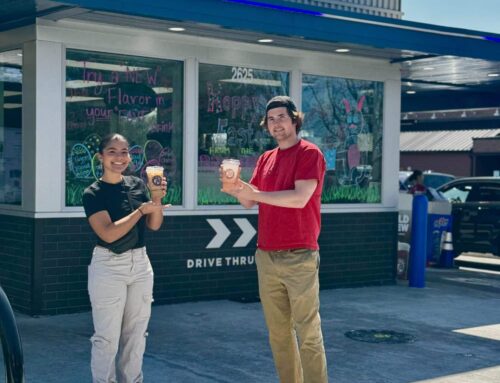By Josephine Lee–
It’s hard to believe, but America wasn’t always a country with crisp rows of trees, elegantly built plazas and cookie-cutter designed houses. The face of America has changed from one of industry, manufacturing and construction to consumption and fixation. The photographic documentary of the Jones and Laughling Steel Corporation in Pittsburg and the modern photos from the same location, taken by Sue Wrbican show just how historically different the 1950s were compared to now.
The exhibit opens with a photo set of black and white images that display the setting of the steel corporation. Large, menacing machinery overpowered the photos, which displayed where milling operations occurred. Steam and exhaust from the production plant show the hard work. After all, this generation of workers is the first to be able to benefit from the struggles of the previous generation during the Great Depression. The hard work, focus and drive can be seen in every photo. One photo in particular, a close-up of a worker’s face, shows the commitment to his work, in tired eyes, but eyes that show perseverance and pride in one’s work.
These black and white photos give an additional depth and humanity to the steel project. In the 1950s it wasn’t a bunch of machines performing jobs in a tedious manner. These jobs were dangerous, as proven in the photo of a banner that read, “Be safe today so you won’t be sorry tomorrrow.”
The way the exhibit is presented leaves large gaps in history. The 20 years from when the steel corporation was shut down in 1982, to when the land was repurposed in 2002 leaves the audience to imagine how the land must have changed on its own, since photographs are not provided to display the evolution of that location. This exaggerates the photos taken in 2011, since it is a dramatic difference from what was previously there. The area is completely unrecognizable, aesthetically and psychologically.
The site Jones and Laughling Steel Corporation is now SouthSide Works, which serves as an entertainment and retail complex. The factories have disappeared and the industrial feel is gone. Instead, colorful lights and architecturally clean pathways and design replace it. Chain stores with goods from overseas litter the sidewalks that once held steel made in America that gave workers a sense of accomplishment. Now, the workers in this plaza show faces worn from menial work.
The exhibit shows a location has changed from a space that showed hard work to a space where people go to celebrate their hard work. Perhaps juxtaposing the locations of the past and present Jones and Laughling Steel Corporation, Wrbican is showing the audience how much our society has changed and how largely the consumer environment is highlighted.
[email protected]
Photo: Nathan Douglas/The Louisville Cardinal




